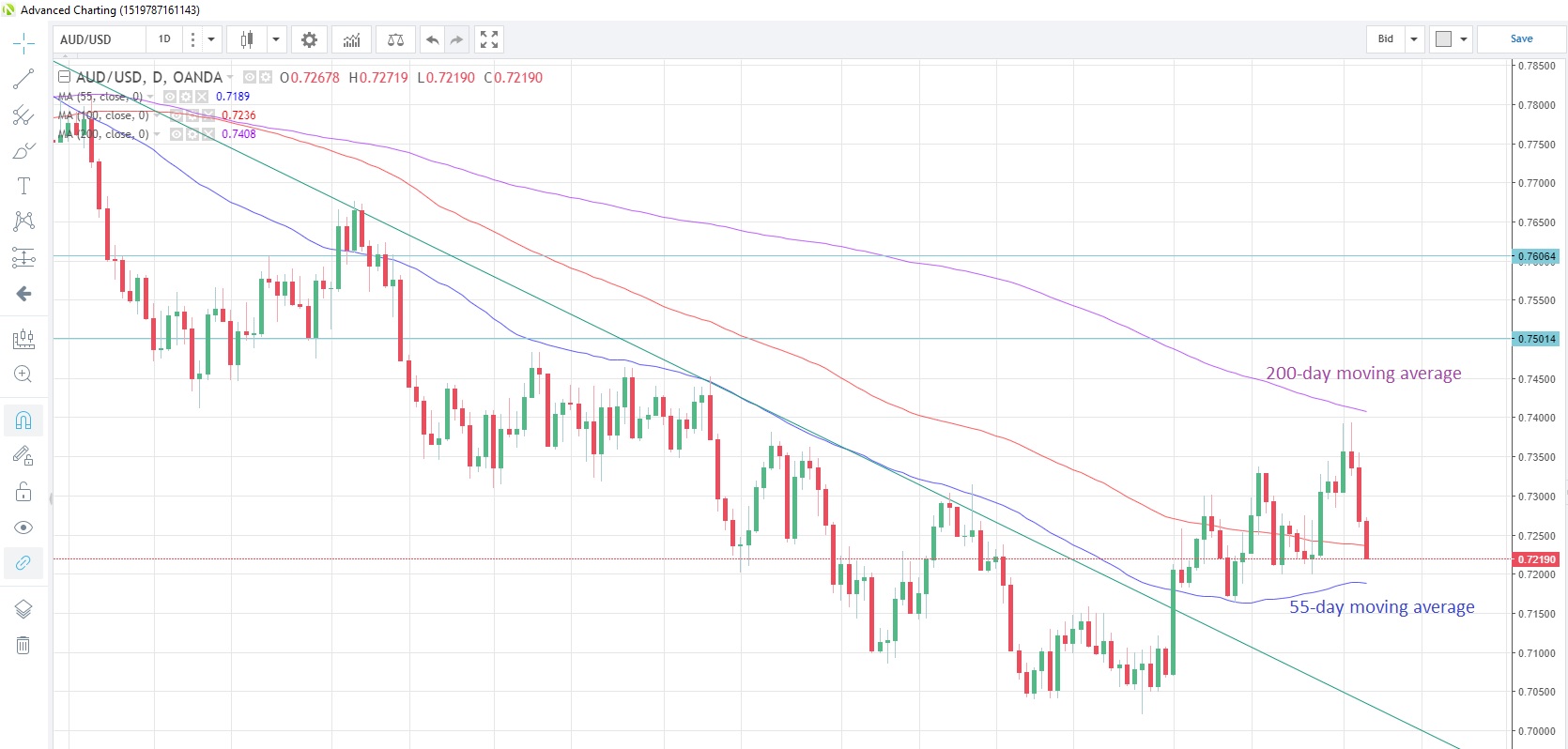Higher imports reduce surplus
Australia’s trade surplus narrowed to A$2.3 billion in October from A$2.9 billion the previous month as exports remained static but imports surged. Imports rose 3% following -1% in September while exports were steady at +1%. On a more positive note, retail sales were higher than expected in October, rising 0.3% m/m versus a +0.2% forecast and accelerating from the +0.1% growth seen in September.
The response in the currency market was to sell the Aussie across the board, though the negative sentiment across equity markets probably also had some impact. AUD/USD dropped below the 100-day moving average at 0.7241 for the first time in a week and looks set to test support at the 55-day moving average 0.7193, which has support the FX pair on a closing basis since October 31. AUD/JPY also sliced through the 200-day moving average and is heading toward the convergence of the 55- and 100-day moving averages at 81.347 and 81.292, respectively.
AUD/USD Daily Chart
Source: OANDA fxTrade
Equities pressured by US-China relations
News that Huawei’s CFO had been arrested in Canada, and the US were seeking extradition, put pressure on the tech sector and this pressure filtered down across all indices as traders raised concerns that US-China relations could be taking a turn for the worse. The Nasdaq 100 index led declines with losses of about 2.5% while the US30 index slumped 1.9%.
Data calendar full of delayed data
The US data calendar has been beefed up with the delayed releases from yesterday as markets remained closed in observance of George H.W. Bush’s funeral. The ADP employment report may give us some clues about Friday’s NFP report while October’s trade deficit is expected to widen to $55 billion from $54 billion in September. PMI readings for November are expected to show a deterioration in the manufacturing PMI and a steady services PMI. Fed Chairman Powell speaks later in the session, followed by FOMC members Bostic (dove, voter) and Williams (hawk, voter).

